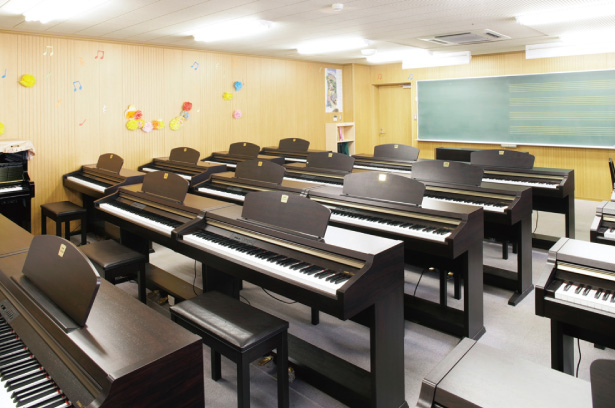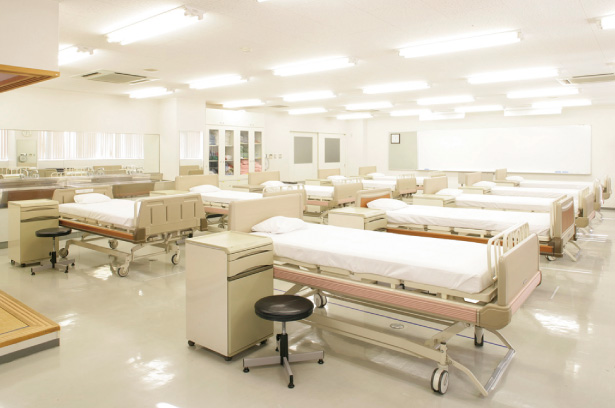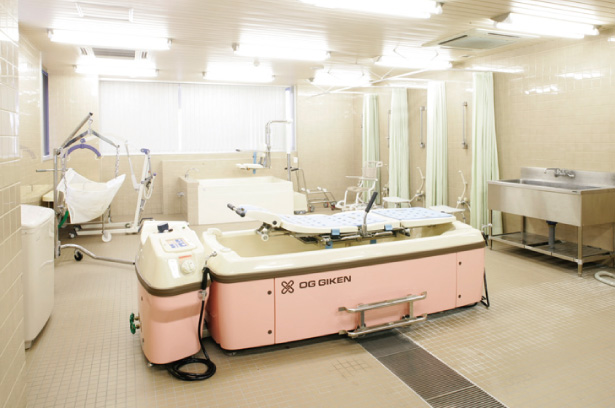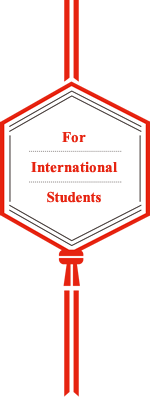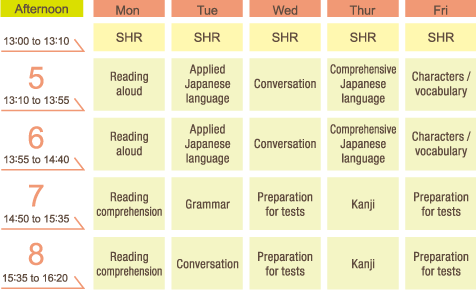Japanese Language Program

Advancement 2-year Course Study period: 2 years [Entrance in April]
| Class time | 5 days a week (Mon to Fri) |
|---|---|
| Class time | Morning class: 09:00 to 12:20 [2nd year] Afternoon class: 13:00 to 16:20 [1st year] |
Advancement 1-year 6-month Course Study period:1-year 6-month [Entrance in October]
| Class time | 5 days a week (Mon to Fri) |
|---|---|
| Class time | Morning class: 09:00 to 12:20 [2nd year] Afternoon class: 13:00 to 16:20 [1st year] |
This is a 2-year or 1-year 6-month Japanese language course aimed at advancing to a university/graduate school or professional college in Japan. As a course for acquiring comprehensive Japanese language proficiency, students improve the 4 Japanese language skills of reading, writing, speaking, and listening in an overall manner, while doing fieldwork and research presentations, and practicing speeches. We also provide measures for the various tests required for higher education (Examination for Japanese University Admission for International Students, Japanese-Language Proficiency Test, etc.) and prepare for entrance examination for students such as interview instructions. Students aim for a level of passing the N2 Japanese-Language Proficiency Test. Also, students will aim to advance to the postsecondary course Care Worker Program at this school and the Izumo School. After advancing to the care worker program, students will aim to acquire the national qualification for care workers and to find employment in Japan with the "care work" status of residence.



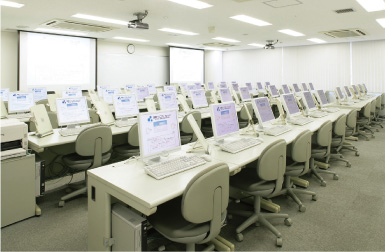
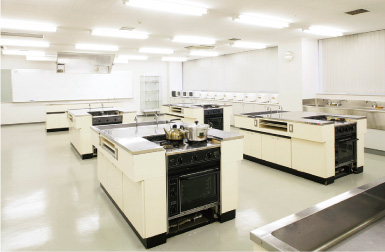
Difference Between the Japanese-Language Proficiency Test (JLPT) and Examination for
Japanese University Admission for International Students (EJU)
The Japanese-Language Proficiency Test (JLPT) is implemented in July and December each year to measure general Japanese language proficiency. To people advancing to a professional college, university, or graduate school, people who want to work in Japan, and people who want to work using Japanese in their home countries, the Japanese-Language Proficiency Test is the perfect test "for proving one's Japanese language ability." On the other hand, the Examination for Japanese University Admission for International Students (EJU) is implemented twice a year, in June and November, to measure one's Japanese ability to handle studying at a university or the like in Japan. 95% of national universities and 65% of public universities require foreign students to take the Examination for Japanese University Admission for International Students in entrance tests for undergraduate programs. Also, 44% of private universities require taking the Examination for Japanese University Admission for International Students. As for the composition of test questions, the EJU has short-answer questions, but the JLPT does not. Conversely, the JLPT has questions on linguistic knowledge (characters / vocabulary / grammar), but the EJU does not have questions that directly test linguistic knowledge. Also, regarding the sections where the two tests have the same question format, namely, reading comprehension / listening comprehension and listening-reading comprehension (listening comprehension on the JLPT), each test has questions that match that test's respective goals.
Curriculum
* The curriculum is subject to change.
| 1st year | 2nd year | |
| April |
Introductory I (3 months)Can use greetings and have simple conversations in daily situations. ● [Kanji] About 150 characters |
Intermediate III (3 months)Can read documents and listen to and comprehend general topics and abstract matters ● [Kanji] About 850 characters |
| May | ||
| June | ||
| July |
Introductory II (3 months)Can have simple conversations in daily situations. ● [Kanji] About 300 characters |
Advanced I (3 months)Can read newspaper articles or simple critiques and can listen to the news and comprehend the main points. ● [Kanji] About 1,000 characters |
| August | ||
| September | ||
| October |
Intermediate I (3 months)Nurtures conversational competence close to natural speed in daily situations and reading comprehension competence close to the intermediate level. ● [Kanji] About 450 characters |
Advanced II (3 months)Can read newspaper articles and critiques written about a wide range of topics, can listen to and grasp the main points of coherent conversations or news spoken at a natural speed, and can describe one's own thoughts. ● [Kanji] About 1,500 characters |
| November | ||
| December | ||
| January |
Intermediate II (3 months)Can read simple documents and listen to and comprehend general topics and abstract matters. ● [Kanji] About 750 characters |
Advanced III (3 months)Can read newspaper articles and critiques written about a wide range of topics, can listen to and sufficiently comprehend coherent conversations or news spoken at a natural speed, and can describe one's own thoughts. ● [Kanji] About 2,000 characters |
| February | ||
| March |
Tuition
- Advancement
2-year Course -
Annual Screening fee Entrance fee 1st
semester tuition2nd
semester tuitionTotal
annual paymentTotal payment Teaching materials cost /
Insurance1st
year15,000 JPY 100,000 JPY 350,000 JPY 350,000 JPY 815,000 JPY 1,515,000 JPY 60,000 JPY 2st
year─ ─ 350,000 JPY 350,000 JPY 700,000 JPY 60,000 JPY
- Advancement
1-year 6-month
Course -
Annual Screening fee Entrance fee 1st
semester tuition2nd
semester tuitionTotal
annual paymentTotal payment Teaching materials cost /
Insurance1st
year15,000 JPY 100,000 JPY 350,000 JPY 350,000 JPY 815,000 JPY 1,165,000 JPY 60,000 JPY 2st
year─ ─ 350,000 JPY ─ 350,000 JPY 34,000 JPY
* All amounts include tax. * Transportation fees involved in daily commuting and practicals are to be borne by the student.
* Fees involved in the Examination for Japanese University Admission for International Students (EJU), Japanese-Language Proficiency Test (JLPT), and other qualification tests are to be borne by the student.
Criteria for Eligibility
- Advancement 2-year
Course
- Advancement 1-year
6-month Course
(1) The student is 18 years old or older.
(2) The student has undergone 12 years of school education outside Japan.
Also, no more than 5 years have passed since the student's last school graduation(the student is not older than 30 years old).
(3) The student has Japanese proficiency equivalent to Japanese-Language Proficiency Test N5 or higher, or has 150 hours or more of Japanese learning and can verify that with the result notice of an official Japanese-Language Proficiency Test or the like.
(4) The student has sufficient assets to cover their tuition and living costs while attending the college.
(5) The student's goal in studying abroad and their post-graduation career path are clear.
(6) The student has never been denied after applying for a "student" status of residence from a Japanese education facility other than this school.
Scholarships
Japan Student Services Organization, Scholarship for Privately-Financed International Students
| Grantees | Several persons(Varies by academic year depending on the rules set by the Japan Student Services Organization.) |
|---|---|
| Criteria for eligibility |
The student has both outstanding schoolwork and character,and has difficulty receiving education due to economic reasons. |
| Provided amount |
Monthly amount of 30,000 JPY (Japanese Language Program),Monthly amount of 48,000 JPY (Care Worker Program) |
| Provided period |
1 year |
| Method of application |
An explanatory session is held after entrance, and then grantees are screened based on documents. |
| Decision |
Mid-June |
Scholarship by the Kyoritsu International Foundation
| Name | Kyoritsu International Foundation Scholarship | Kyoritsu Maintenance Scholarship |
|---|---|---|
| Applicable program |
Care Worker Program | Japanese Language Program, Care Worker Program |
| Grantees | 15 students *1 student per school type | 35 students *1 student per school type |
| Criteria for eligibility |
Student with nationality in an Asian country with outstanding grades and attendance | |
| Provided amount |
Monthly amount of 100,000 JPY | Monthly amount of 60,000 JPY |
| Provided period |
2 years | 1 year |
| Decision | Mid-March | |
